Ferns are among the oldest and most diverse plants on Earth, offering lush foliage and unique textures that can enhance any indoor or outdoor space. Their ability to thrive in various conditions makes them a popular choice for gardeners and houseplant enthusiasts alike. Beyond their aesthetic appeal, many ferns possess air-purifying qualities, making them valuable companions in our homes and gardens. This guide will explore the various types of ferns suitable for both indoor and outdoor settings, their ability to remove toxins from the air, and some specific varieties you can cultivate in your spaces.
The Air-Purifying Power of Ferns
Ferns have a remarkable ability to improve air quality by removing toxins and releasing oxygen. As indoor plants, they help create a healthier environment, which is especially important in urban settings where air pollution can be a concern. Here are two specific toxins that ferns are particularly effective at filtering out:
Toluene
Toluene is a common solvent found in paints, paint thinners, nail polish, and adhesives. Long-term exposure to toluene can lead to health issues such as headaches, dizziness, and even liver and kidney damage. Research has shown that ferns can absorb toluene through their leaves and roots, thereby reducing its concentration in the air.
Xylene
Xylene is another harmful chemical often found in various household products, including paints, varnishes, and cleaning agents. It can cause headaches, nausea, and respiratory issues when inhaled. Ferns are particularly adept at absorbing xylene, helping to purify indoor air and mitigate its negative effects on health.
By incorporating ferns into your indoor or outdoor spaces, you can benefit from their air-purifying qualities while enjoying their lush greenery.
Exploring Indoor Fern Varieties
Indoor ferns are perfect for adding a touch of nature to your home while also contributing to a healthier living environment. Here are some popular indoor fern varieties:
1. Boston Fern (Nephrolepis exaltata)
The Boston fern is one of the most beloved indoor ferns, known for its feathery, arching fronds that create a lush appearance. It thrives in humid environments and prefers indirect sunlight. Boston ferns are effective at removing toxins from the air and require regular watering to keep their soil consistently moist.
2. Asparagus Fern (Asparagus densiflorus)
Despite its name, the Asparagus fern is not a true fern but rather a member of the lily family. This plant features delicate, feathery foliage that can add a soft touch to any indoor space. It’s relatively low-maintenance, thriving in indirect light and requiring moderate watering. The Asparagus fern can tolerate drier conditions than many other ferns, making it a versatile option.
3. Male Fern (Nephrolepis biserrata)
The Male fern is known for its upright, lush fronds that can reach impressive heights. This hardy fern prefers bright, indirect light and well-draining soil. Regular watering is essential to maintain its vigor, but it can tolerate occasional drying out between waterings. The Male fern is an excellent choice for larger indoor spaces or as a statement piece.
4. Bird’s Nest Fern (Asplenium nidus)
The Bird’s Nest fern is unique for its rosette shape, resembling a bird’s nest. It thrives in low to medium light conditions and prefers high humidity. This fern enjoys evenly moist soil, and its broad, wavy leaves can add a striking focal point to any room. It’s also known for its ability to filter out formaldehyde and other toxins from the air.
5. Rabbit’s Foot Fern (Davallia fejeensis)
The Rabbit’s Foot fern is named for its unique rhizomes that resemble rabbit’s feet, which can trail down from the pot. This fern prefers indirect light and well-draining soil, making it ideal for hanging baskets or elevated planters. The Rabbit’s Foot fern is relatively easy to care for and adds an interesting textural element to your indoor collection.
6. Lemon Button Fern (Nephrolepis cordifolia ‘Duffi’)
The Lemon Button fern is a compact fern with small, round leaflets that have a pleasant citrus scent when touched. It thrives in low to medium light and requires regular watering to keep its soil moist. This fern is perfect for smaller spaces and can be used in terrariums or as a tabletop plant.
7. Queen Kimberly Fern (Nephrolepis obliterata)
The Queen Kimberly fern is known for its broad, feathery fronds that can grow up to three feet long. This fern prefers bright, indirect light and should be watered regularly to maintain humidity. Its striking foliage can add a tropical feel to your indoor space and is also effective in filtering out indoor pollutants.
Choosing the Right Indoor Fern
When selecting ferns for indoor spaces, consider the following factors:
- Light Requirements: Different ferns have varying light needs, from low to bright indirect light. Assess the lighting conditions in your home before making a selection.
- Humidity Levels: Many ferns thrive in humid environments. If you live in a dry climate, consider using a humidifier or placing a tray of water near your plants to maintain humidity.
- Space Availability: Ferns can range in size from compact varieties to larger, statement plants. Choose a size that fits your space and complements your decor.
Exploring Outdoor Fern Varieties
Ferns can also be a stunning addition to outdoor gardens and landscapes. Here are some popular ferns that thrive in outdoor settings:
1. Japanese Painted Fern (Athyrium niponicum)
The Japanese Painted fern is renowned for its striking foliage, featuring silvery-gray fronds with purple and green accents. This hardy fern thrives in partial to full shade and prefers moist, well-draining soil. It’s an excellent choice for adding color and texture to shaded garden beds or borders.
2. Ostrich Fern (Matteuccia struthiopteris)
The Ostrich fern is known for its tall, feathery fronds that can reach heights of 3 to 5 feet. This fern prefers moist, shady areas and is ideal for planting near water features or in woodland gardens. Its elegant appearance and lush growth make it a popular choice for naturalistic landscapes.
3. Lady Fern (Athyrium filix-femina)
The Lady fern is a versatile option that can thrive in various conditions, from full shade to partial sun. It features delicate, lacy fronds that can grow up to 3 feet tall. The Lady fern is a great addition to gardens, providing a soft, natural look.
4. Maidenhair Fern (Adiantum)
Maidenhair ferns are known for their delicate, fan-shaped leaflets and graceful appearance. They thrive in moist, shady areas and are often found near streams and other water sources. Maidenhair ferns require well-draining soil and regular moisture to flourish.
5. Bracken Fern (Pteridium aquilinum)
The Bracken fern is a hardy and adaptable fern that can grow in a variety of conditions, including open woodlands and meadows. It features large, triangular fronds that can reach heights of up to 4 feet. While it can be invasive in some regions, it’s valued for its resilience and ability to thrive in less-than-ideal conditions.
6. Fernleaf Phlox (Phlox subulata)
While not a traditional fern, the Fernleaf Phlox features fern-like foliage that adds unique texture to outdoor gardens. It produces vibrant flowers in spring and prefers well-drained soil and full sun. This plant works beautifully as a ground cover or in mixed borders.
7. Western Sword Fern (Polystichum munitum)
The Western Sword fern is native to the Pacific Northwest and is known for its robust, upright fronds. This hardy fern prefers moist, shady conditions and can thrive in a variety of soil types. It’s an excellent choice for woodland gardens or shaded areas.
Tips for Caring for Outdoor Ferns
Caring for outdoor ferns involves several key practices to ensure their health and vitality:
- Soil Preparation: Ferns prefer well-draining soil rich in organic matter. Adding compost or mulch can help improve soil structure and retain moisture.
- Watering: Regular watering is essential, especially during dry spells. Ensure the soil remains consistently moist but not waterlogged.
- Mulching: Applying a layer of mulch around ferns can help retain moisture, suppress weeds, and maintain soil temperature.
- Pruning: Regularly remove dead or yellowing fronds to encourage new growth and maintain the plant’s appearance.
- Protection from Harsh Conditions: In colder climates, consider providing winter protection for outdoor ferns by covering them with mulch or burlap.
Integrating Ferns into Your Indoor and Outdoor Spaces
Ferns can be used creatively in both indoor and outdoor settings. Here are some ideas for incorporating ferns into your decor:
Indoor Integration
- Hanging Baskets: Ferns such as the Rabbit’s Foot fern and Asparagus fern are perfect for hanging baskets, allowing their trailing fronds to cascade beautifully.
- Terrariums: Smaller ferns like the Lemon Button fern can thrive in terrariums, creating a mini-ecosystem that showcases their lush foliage.
- Focal Points: Larger ferns like the Bird’s Nest fern or Male fern can serve as stunning focal points in living rooms or entryways.
Outdoor Integration
- Garden Borders: Use ferns to create natural borders in your garden beds, adding texture and softness to the landscape.
- Shady Spots: Ferns are ideal for planting in shady areas where other plants may struggle to grow, providing greenery where it’s needed most.
- Mixed Plantings: Combine ferns with flowering plants and shrubs to create vibrant, multi-layered gardens that provide year


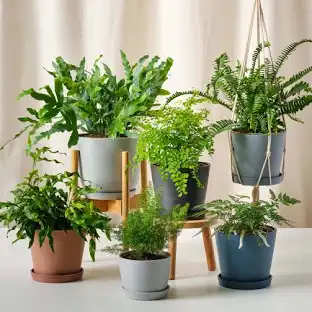
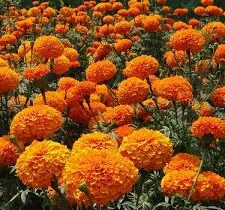
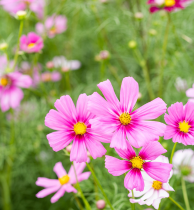
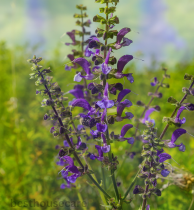
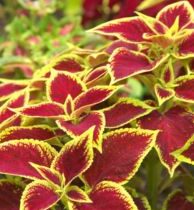
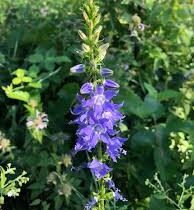
Leave a Reply
View Comments